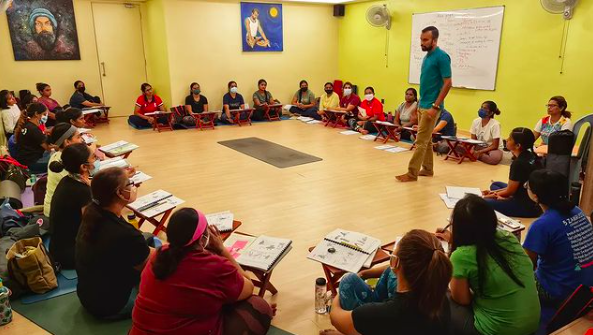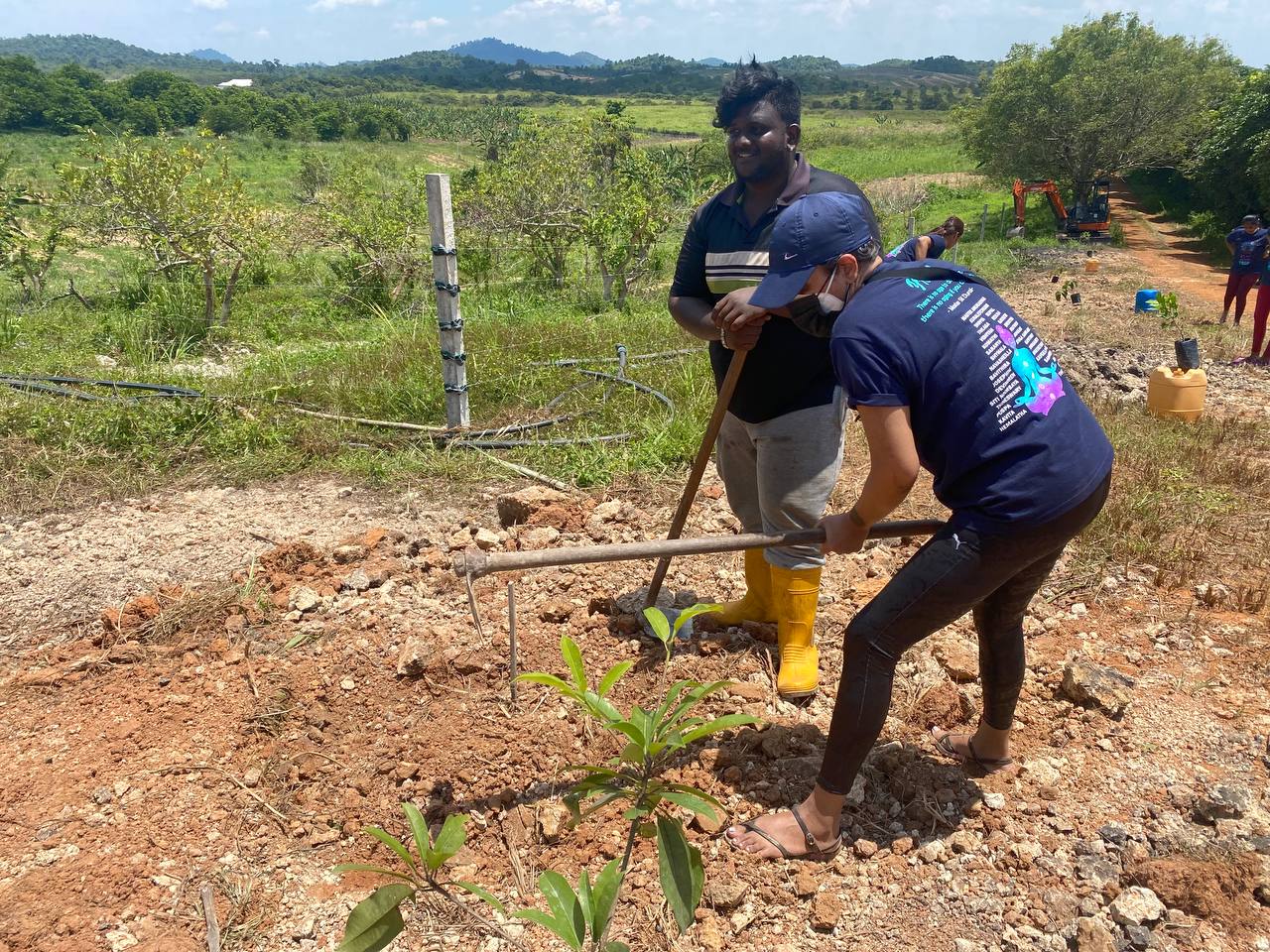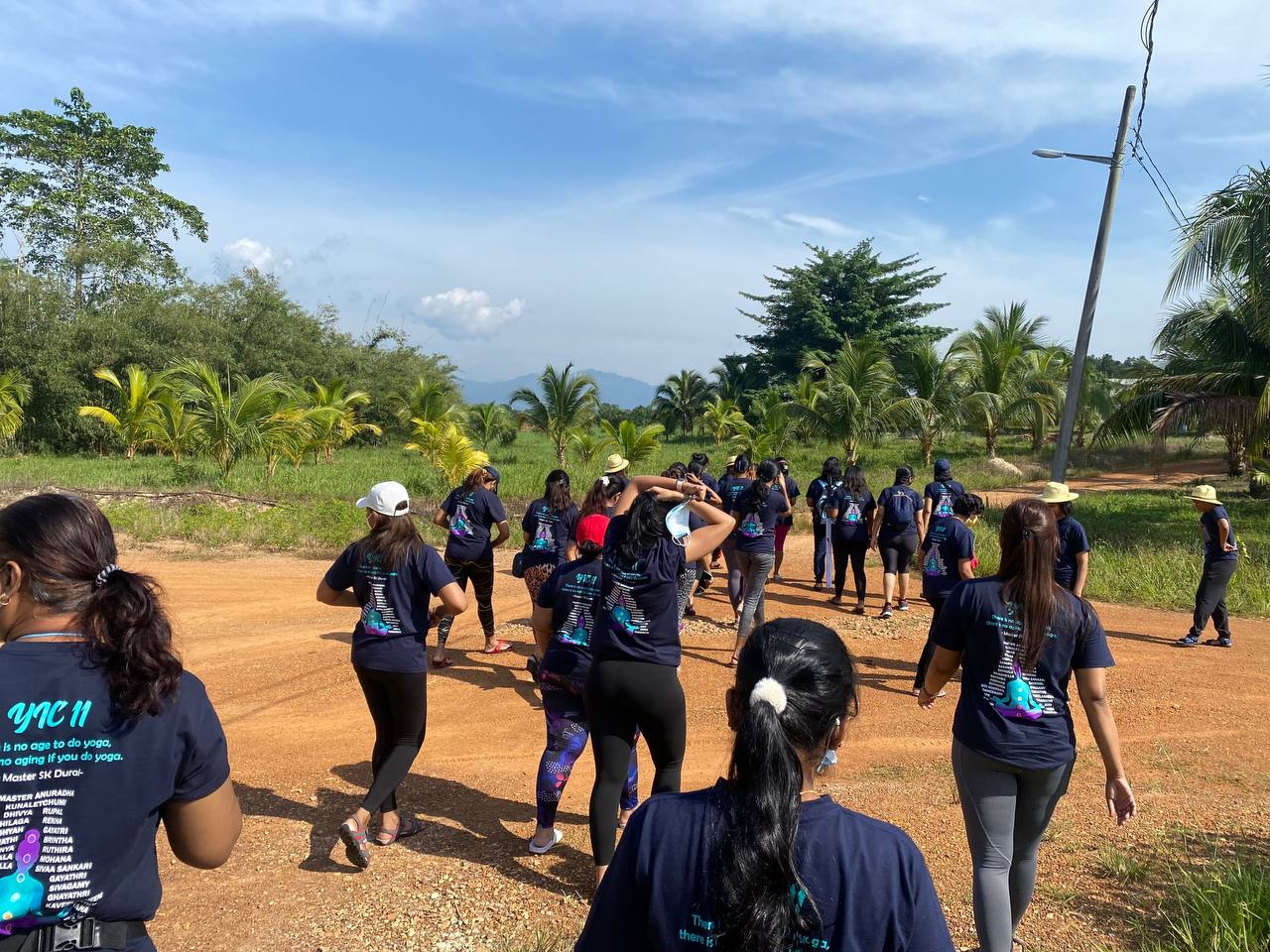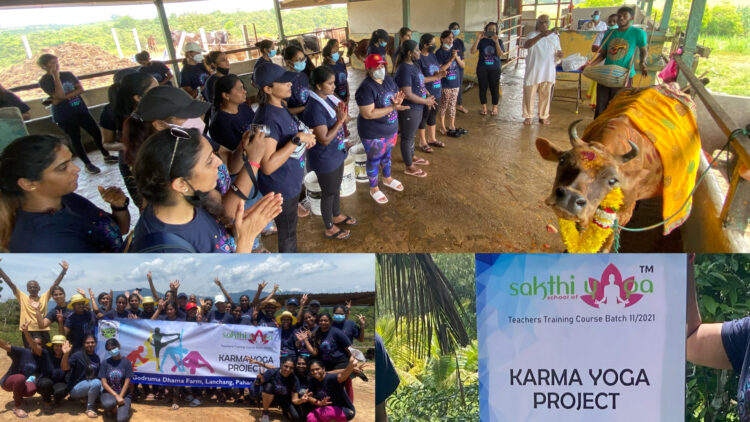When the word Karma is mentioned, it is typically associated with something negative or bad. We hear phrases like “Karma is a boomerang,” which is usually used when something bad happens. Now, let me explain what the word “Karma” actually means.
Karma literally means “action” in Sanskrit, from which the word was derived. As a result, the word’s meaning extends beyond “good” or “bad.” Nowadays, we are easily distracted and misinterpret the word due to the trend of overusing the word without considering the context.
While most people focus on the negative connotation of the word these days, I’d like to take you on a journey through this read with a group of Sakthi School of Yoga students from batch 11 to perform something called “Karma Yoga.”

Sakthi School of Yoga, founded by Master SK Durai, is well-known for teaching Hatha and Ashtanga Yoga. Not only that, but over the years, this school has produced over 200 yoga students, and they are currently on their 12th batch of Yoga Teacher Training Course.
As part of their syllabus for completing their Yoga Teacher Training Course, they will be required to participate in an activity known as “Karma Yoga,” which translates to “selfless action performed for the benefit of others.”
Aside from “Karma Yoga,” Hinduism also has two other classical spiritual paths: Bhakti Yoga and Jnana Yoga. The Bhagavad Gita mentions all of these spiritual paths in detail.
But what intrigues me is that these students are not only seeking their theoretical knowledge but also putting it into practise on their path to becoming yogis. According to the team, this project is typically carried out in old folks homes or on beaches, where they would practise Karma Yoga by cleaning the area and assisting in other ways as needed.

However, it appears that this is the first batch to plan to conduct this activity in a cow farm, the New Godruma Dhama Farm in Lanchang, Pahang. As I previously stated, this Karma Yoga is more than just visiting the location; the student will be required to perform a selfless act of service there by bathing and feeding the cow, cleaning the cow barn, and planting around the area.

According to the Bhagavad Gita, Karma Yoga purifies the mind. Similarly, apart from the benefits of flexibility and mobility, Yoga in general aids in the purification of the mind. So, does yoga have any significance in relation to the Gita?
To respond to this question, one of the farm’s executives, who is well-versed in Gita, stated that;
“Yoga is more than just the physical attributes of the body; it is a connection between the Jiva and the Supreme. There are various types of yoga that can be used to establish this relationship or connection. That is when Karma Yoga comes into play, in which the activity is done to the satisfaction of the Supreme.
He also claims that this “Karma Yoga,” or selfless act, can be performed anywhere and at any time. We live in a very modern world where we don’t often see cow farms to conduct this activity. However, he asserts that any activity performed to please the Supreme without expectation or gratification is considered Karma Yoga.
It can be as simple as cleaning our home, cooking for our family, or even donating to a small charity. If our motivation and inspiration behind the activity is dedicated to satisfy the Lord or the Supreme, then it will be considered “Karma Yoga.”
There is no such thing as the best type of Karma Yoga practise, according to him. In fact, “Karma Yoga” refers to any activity aimed at pleasing the Supreme.

He says;
“When we do this activity, it not only affects us on a human level, but it also satisfies our soul on a spiritual level.
We live in a material world, but the soul is something very spiritual. In the end, one can only be satisfied if it is left in its natural habitat. Similarly, in this material world, we cannot satisfy the soul by pursuing materialistic things.
That is why Karma Yoga is cultivated. We, as humans, are so preoccupied with material things that we forget to feed our souls. We will transform our material activity into something spiritual by practising Karma Yoga. In that case, this soul will naturally achieve eternal permanent fulfilment and find peace and contentment.
Not only did learning a very refreshing knowledge about the misconception of Karma open my eyes, but it also changed the perception of the students who were present.

There were 32 students altogether and their ages ranged from 18 to more than 40 years old, but they all contributed equally to this project regardless of age, and they were all eternally grateful to be able to share this new type of Karma with their other batchmates on their journey to become Yogis.
I hope those who read this have a better understanding of the subject and I also recommend going to the New Godruma Dhama Farm in Pahang to experience bliss in your heart. The environment and people there are super welcoming.

Joining the team on this journey was a huge blessing for me, and I felt like my heart was so connected to nature. This will be a once-in-a-lifetime experience. On that note, I wish all of the Sakthi School of Yoga‘s batch 11 students the best of luck on their spiritual quest to become Yogis.
To learn more about Sakthi School of Yoga, go to their website and follow Master SK Durai on Instagram for updates.
Follow us on Instagram, Facebook or Telegram for more updates and breaking news.








